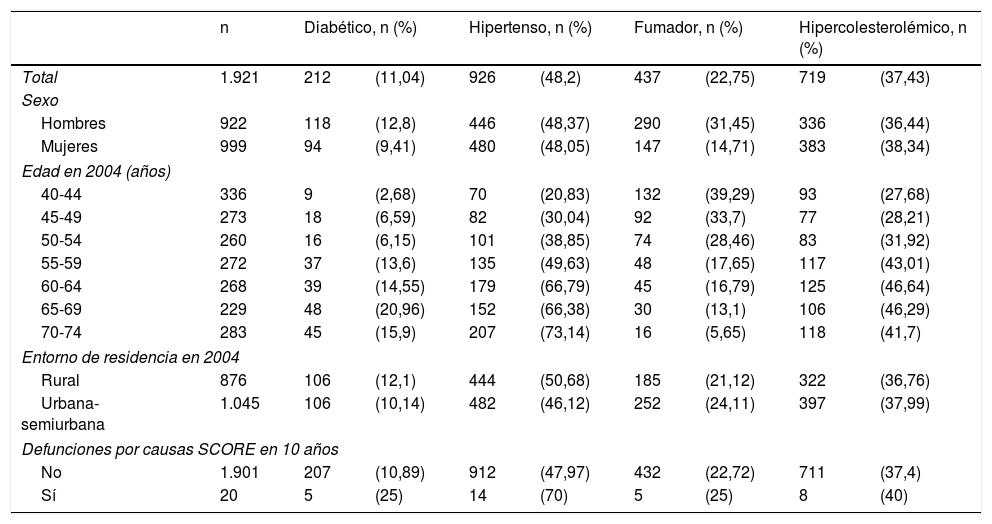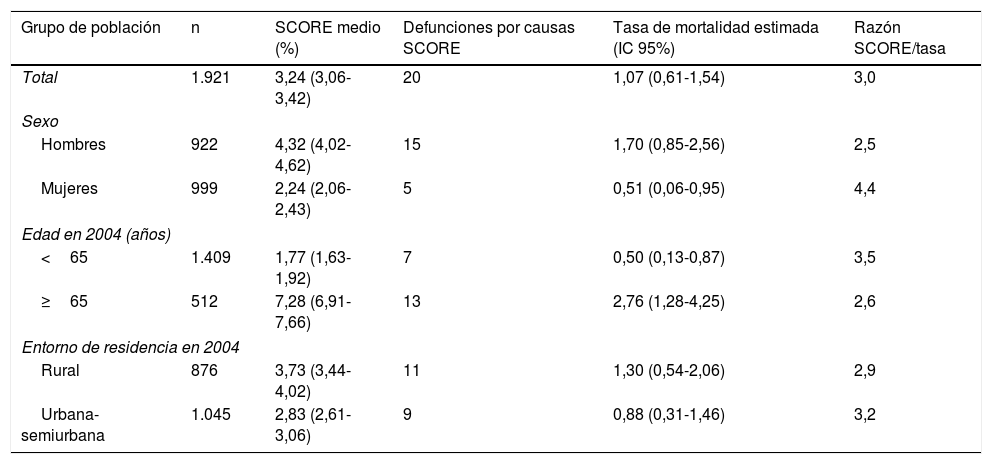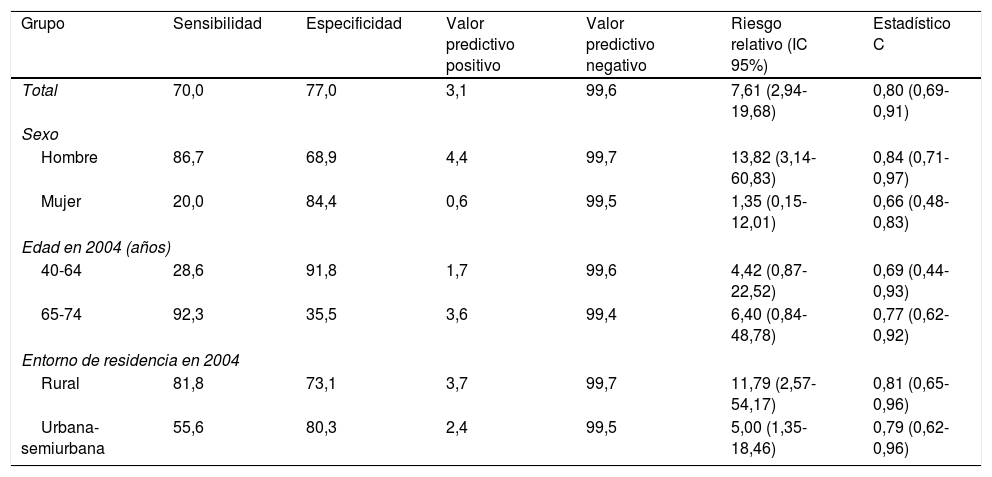El Systematic Coronary Risk Evaluation (SCORE) es el índice más extendido en Europa para la valoración del riesgo cardiovascular global. El presente trabajo tiene como objetivo validar el riesgo calculado en 2004 con la mortalidad cardiovascular observada en 10 años de seguimiento de una cohorte de población de 40 a 75 años.
MétodosEn 2004 se calculó el SCORE y el SCORE OP para personas mayores en la población de 40 a 64 y de 65 a 74 años, respectivamente. En 2014 se estimó la mortalidad a 10 años con el modelo de supervivencia y el estimador de Kaplan-Meier. Se calcularon la sensibilidad, la especificidad, los valores predictivos, el riesgo relativo con valores SCORE≥5% y el área bajo la curva (estadístico C).
ResultadosLa mortalidad cardiovascular estimada por el SCORE fue 3 veces superior a la observada. La sensibilidad de un SCORE≥5% fue del 20% en mujeres y del 28,6% por debajo de los 65 años. Los valores predictivos positivos fueron también bajos, sobre todo en las mujeres, con un escaso 0,6%. El estadístico C no fue significativo ni para las mujeres ni para los menores de 65 años.
ConclusionesEl índice de riesgo de mortalidad SCORE no refleja adecuadamente al patrón epidemiológico de las enfermedades cardiovasculares en Castilla y León. Se hace necesaria una revisión periódica de los modelos de predicción de enfermedad y de mortalidad para adaptar y corregir los protocolos de prevención y tratamiento. El SCORE OP presenta mejores parámetros de validez que el SCORE tradicional.
The Systematic Coronary Risk Evaluation (SCORE) is the most extended index in Europe for overall cardiovascular risk assessment. This study aims to validate the calculated risk with the observed 10-year cardiovascular mortality in a population cohort aged 40 to 75 years.
MethodsIn 2014 the SCORE and the SCORE OP (for older people) were calculated in a population aged 40 to 64 years-old and 65 to 75 years-old, respectively. In 2014 the 10-year mortality was estimated with the Kaplan-Meier estimator and survival model. Sensitivity, specificity, predictive values, risk ratio of a SCORE value≥5%, and the area under the curve (C statistic) were calculated.
ResultsCardiovascular mortality estimated by SCORE was 3 times higher than the observed mortality. The sensitivity of a SCORE≥5% was 20% in women and 28.6% in those less than 65 years old. Predictive positive values were also low, particularly in women with 0.6%. Neither women nor those aged less than 65 years had a significant C statistic.
ConclusionsThe SCORE index does not suitably reflect the cardiovascular mortality pattern in Castilla y León. The prediction models for morbidity and mortality need to be periodically updated in order to adjust the prevention and treatment protocols. The SCORE OP has better validity parameters than the SCORE calculated below that age.














